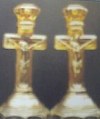Carnival Glass 101 | home Quick Reference to Carnival Glass Patterns on This Site
Wild Rose and Blossoms and Palms - Part 1
WILD ROSE and BLOSSOMS & PALMS - Part 1
The SPRING 1906 Butler Brothers Wholesale Catalog displays an ad having three shape variations of the Wild Rose bowl in NEW “OPALESCENT”. These are the type having central marie and three small legs outside that marie.
Turning a few pages to APRIL 1906, we discover OUR OPALESCENT NOVELTY Asst., having a 7 ½" open-edge flared and 7” deep nut bowl shape in Wild Rose, along with Blossoms & Palms bowls having 3/1 edge and 6 ruffle.
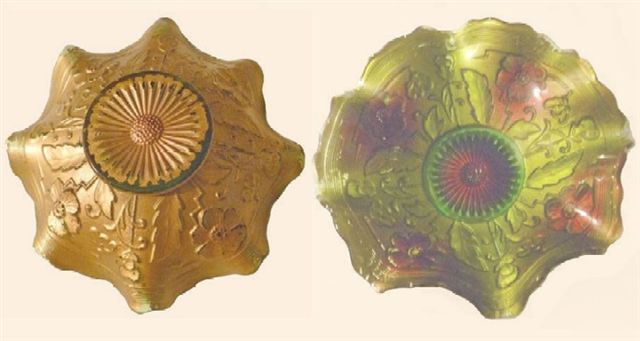
LIGHTNING FLOWER Ext - GOOFUS Interior - 7 edge threads.

Mid-Spring 1909 Butler Bros. Ad - Golden Iridescent.
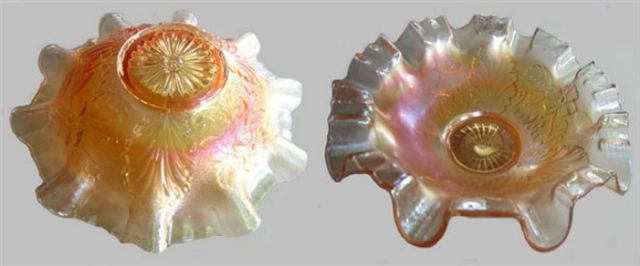
BLOSSOMS and PALMS - Northwood - 8.5 in. diam.x 2.5 in. deep.
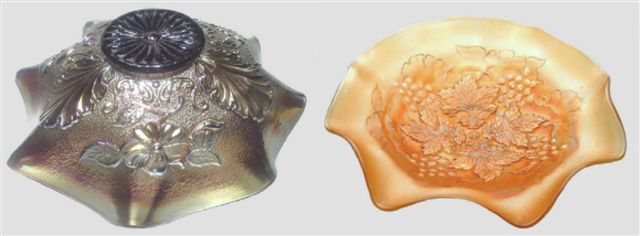
BLOSSOMS & PALMS Ext. (left) - GRAPE LEAVES Int. (right).
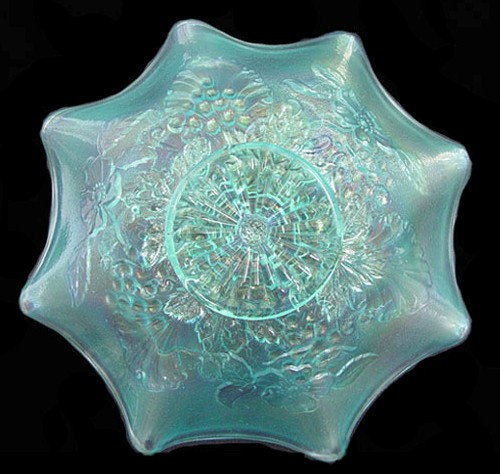
IB BLOSSOMS & PALMS with Grape Leaves Interior Patten.
LIGHTNING FLOWER: Northwood produced Goofus Glass in 1908-1909. as seen with these photos, the design was re-named Blossoms & Palms when the pattern was used for carnival glass.
BLOSSOMS & PALMS: Apparently introduced in Golden iridescent (Marigold), the October 1909 issue of Butler Bros. Catalog, displayed the same bowl assortment titled: “IRIDESCENT” SALAD DISH ASSORTMENT. 9” in 3 fancy shapes, all footed, crimped edges, assorted golden, green and wine ruby iridescent lusters were offered.
GRAPE LEAVES: The iridized form of this pattern first appeared in a late 1909 Butler Bros. Catalog and production continued through 1912, usually found having the Blossoms & Palms exterior design. The 8”-9” bowls are known to have six ruffles, eight ruffles or the three and one crimped edge. The N is always on a raised “button” in the center of the pattern. No, the “three-and-one” edge seen on these bowls occasionally, does not indicate Dugan production. Grape Leaves pattern did not exist in 1901 when Northwood left PA for West Virginia. Northwood made many of their opalescent items with that “three-and-one” edge.
Marigold, amethyst, green and cobalt blue iridized bowls are known with the “three-and-one” edge. Ruffled bowls are found in marigold, amethyst, green, cobalt blue, lavender, clambroth, amber and (at least a couple of ice blue examples are known).
WILD ROSE
The rarest shape in the pattern is the footed plate. Only a couple of green examples of this flattened shape are known.
The rosebowl shape places the reticulated edge in a cupped-in position at top edge. It is found less often than other shapes, with green being most available. Amethyst is somewhat more difficult to locate, with marigold examples being quite scarce! Ice Blue should be considered rare. A single example of sapphire exists.
The reticulated edge on the nutbowl shape points straight up, with green the most common color, followed by marigold and amethyst. Cobalt blue is rarely seen. Ice blue is quite rare. There is one confirmed example in horehound.
The flared edge is found most often and that flare can be in varying degrees; from near flat to a 45-degree angle…….or more. Green is the most often found color, with marigold and amethyst next. Cobalt blue examples are quite scarce, with ice blue examples being very rare!
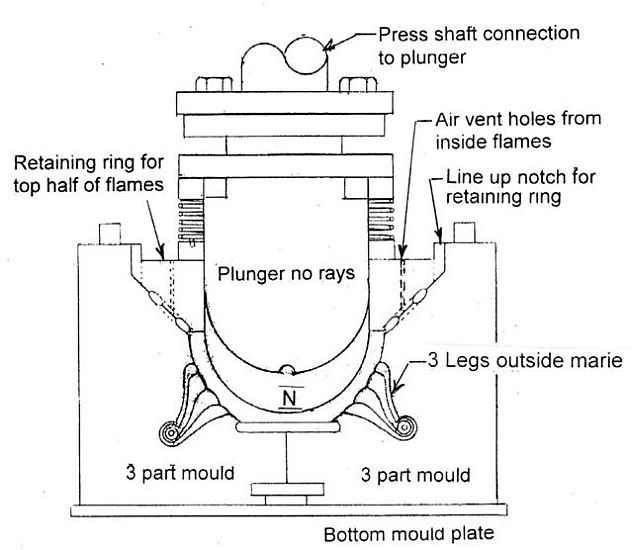
Wild Rose #1 - Overall features of mould.
MOULD #1: All of the mould details are on the #1 drawing. Those same mould details apply to all the mould drawings in both Part 1 and Part 2 of the Wild Rose segments. (The only change is in the applicable plunger.)

(1) WILD ROSE - Vaseline Opalescent.
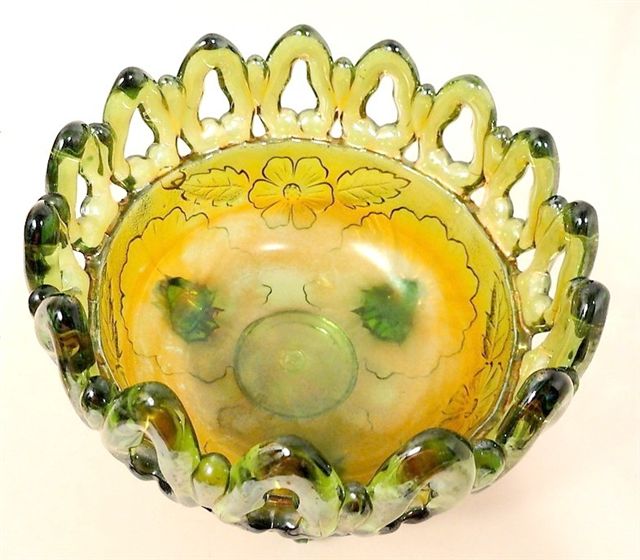
(1A) WILD ROSE - Green. (Plain Interior.) Cupped Rosebowl shape.
#1. The opalescent era, (1905-1906). Conservative business practice dictated use of successful patterns carried over into the iridescent period.
Opalescent Wild Rose examples are also known in non-iridized blue, green, and white.
#1A. Northwood iridescence began with a plain interior having the N in center. Just a spray of color across the interior, as seen in the green example, retaining the three feet outside the “marie”, as seen in photo. Early iridescent efforts began appearing in 1908-1909. (There is one known aqua opal round bowl with flared reticulated edge, having a marigold interior.) Possibly this example exhibits the rosebowl shape? There appears to be a slight inward curve to the top edge.
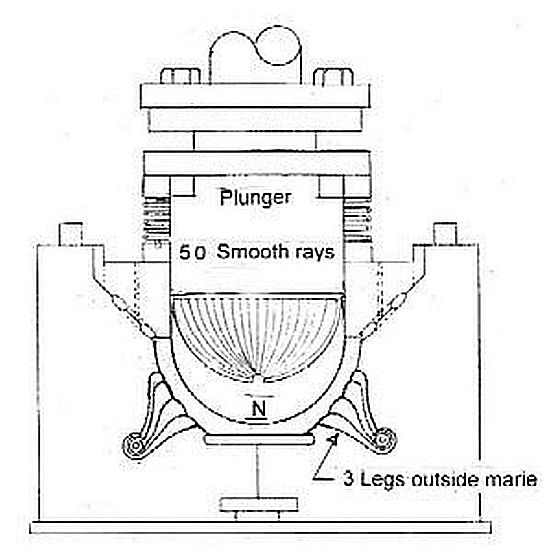
Wild Rose #2 & #3.
MOULD # 2 & #3: The drawing speaks for details found in the Smooth Rays plate and bowl.
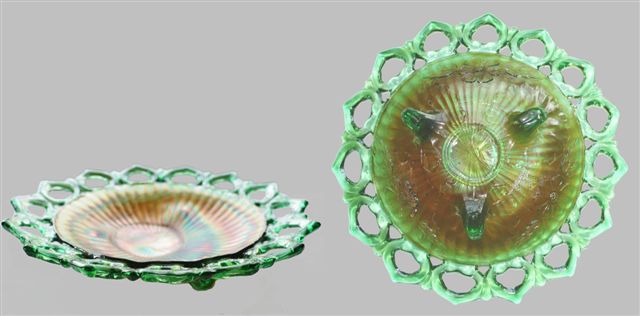
(2) Green WILD ROSE Plate.(Smooth Rays)
Courtesy Jerry & Carol Curtis
#2. Plate: Only a couple of plates have been reported in this pattern; both are green. Size of this example: 1 7/8” high, x 8 ¼” diameter x 1½” marie circumference. The misshapen marie indicates difficulty with placement or removal of the “snap”. Reported plates carry the N and are in green. The three feet remain outside the marie. The Smooth Rays are evident.
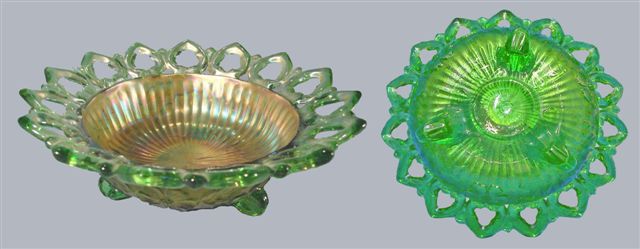
(3) Green WILD ROSE (Smooth Rays) Flared Reticulated Edge.
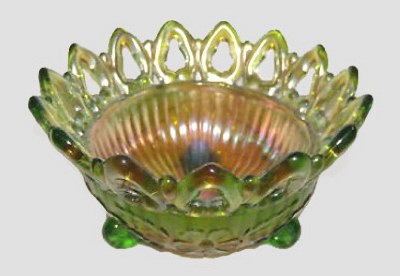
(3A) Green WILD ROSE (Smooth Rays) (Nutbowl).
#3. This Bowl displays the same attributes seen in the green plate; ( ie.) flattened, reticulated edge and Smooth Rays interior.
#3A. Green seems to be the more available color in this Smooth Rays design. This (nut bowl) example offers another variation of the flared shape with reticulated edge standing more upright.
Dean & Diane Fry, Oct. 2013








The writer to the Hebrews devoted an entire section of Hebrews 10 to how we should live while anticipating the arrival of Christ:
Just as hosts say to one another, “Let us prepare for our guests,” so, Christians say, “Let us prepare for Christ’s return with faith, hope, and love”. (1 Corinthians 13:13).








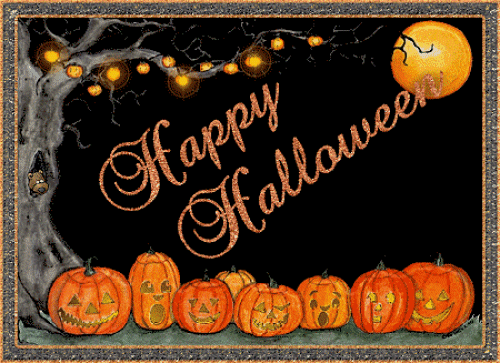
Should you care to contact the Frys, their email address is:
Search Carnival Glass 101
back to Carnival Glass 101
Our other sites you may enjoy:
Everything you EVER wanted to know about Indiana Glass
Great Reference for Newer Carnival Glass.
Complete Glassware Catalogs Available to Download
Questions? Comments? Suggestions? Broken Links? Corrections?
Your Friendly Webmaster is here to help!
